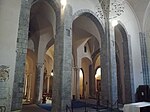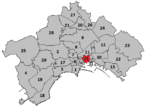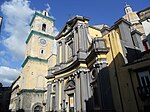Sant'Eligio Maggiore
1270 establishments in Europe13th-century Roman Catholic church buildings in Italy13th-century establishments in the Kingdom of SicilyChurches in NaplesGothic architecture in Naples

Sant’Eligio Maggiore is a church in Naples, southern Italy. It is located near Piazza Mercato (Market Square), and was built during the reign of Charles of Anjou by the same congregation that built the nearby Sant’Eligio hospital in 1270. It is the first church built in Naples by the Angevin dynasty and therefore the first one in Gotico Angioiano style. The arched passageway that opens onto Piazza Mercato is through the original façade of the church and has since been incorporated into the structure of the ancient hospital. Many of the lines of the original structure came to light in the course of restoration after the bombardments of the World War II.
Excerpt from the Wikipedia article Sant'Eligio Maggiore (License: CC BY-SA 3.0, Authors, Images).Sant'Eligio Maggiore
Via Sant'Eligio, Naples Pendino
Geographical coordinates (GPS) Address External links Nearby Places Show on map
Geographical coordinates (GPS)
| Latitude | Longitude |
|---|---|
| N 40.846755 ° | E 14.26448 ° |
Address
Chiesa di Sant'Eligio Maggiore
Via Sant'Eligio
80138 Naples, Pendino
Campania, Italy
Open on Google Maps










